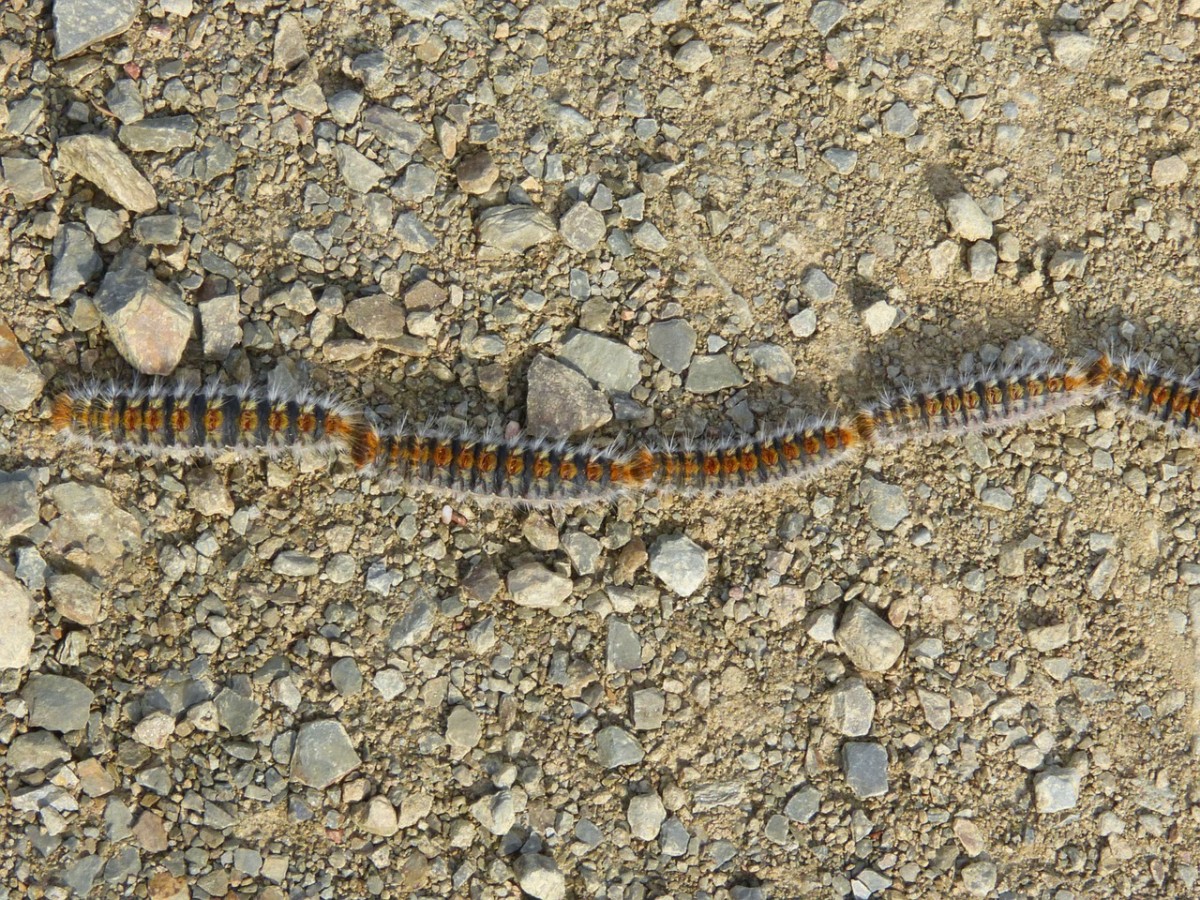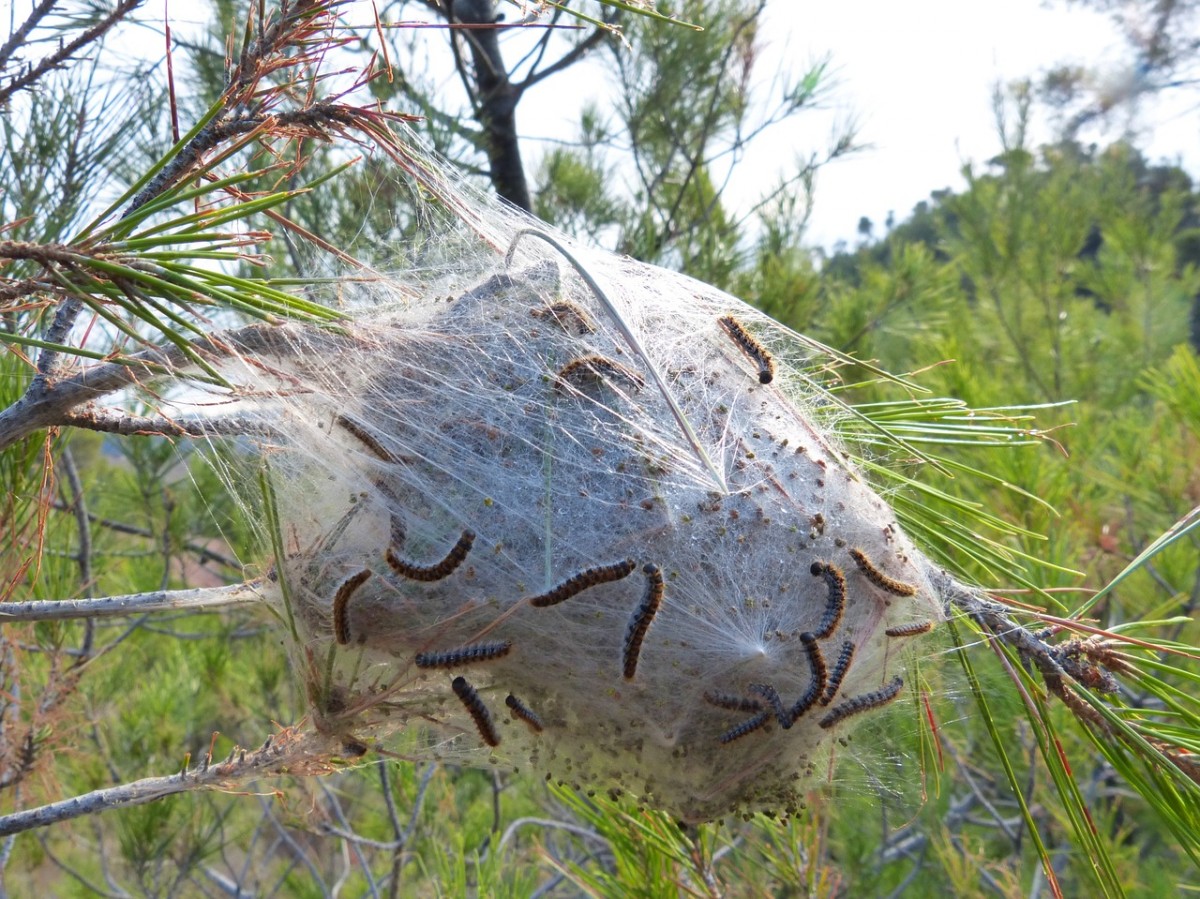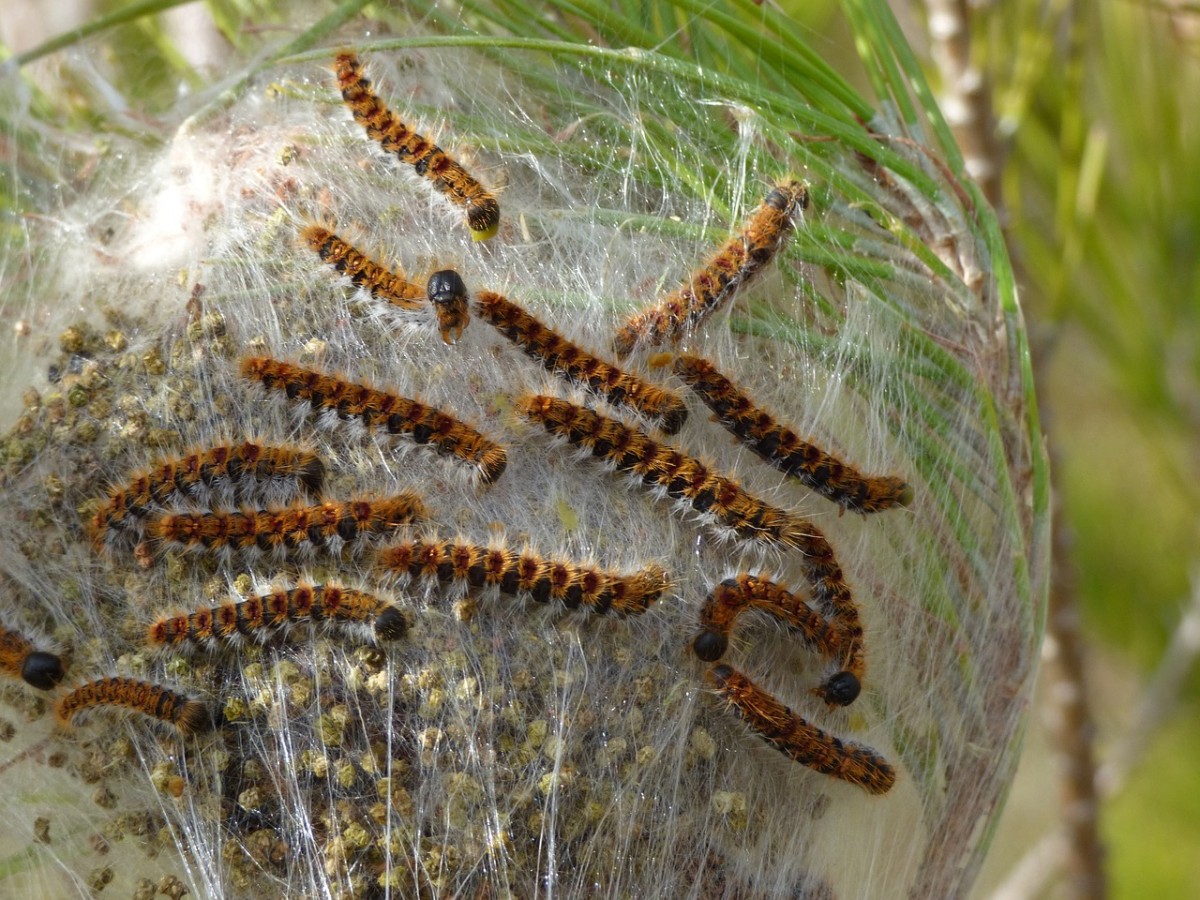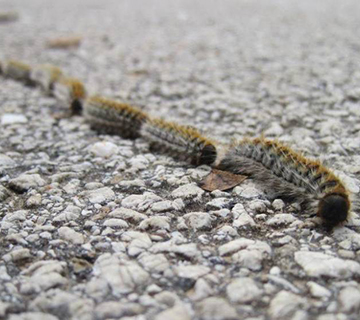The National Association of Pest Control Companies (ANECPLA) has warned locals and visitors to take precautions in view of the early appearance of the pine processionary caterpillar. (Procesionaria del Pino) Contact with the caterpillar of the pine processionary moth can cause intense allergic reactions & lead to some very serious symptoms in both humans & animals. Below are some photographs & information that reveal what to look out for whilst out and about in Spain & some tips of what to do & and what to avoid.
The increase of the processionary caterpillar in the last fourty years appears to be due to climate warming, according to one source. The larvae can appear during the first four months of the year, between January – April, as average temperatures begin to rise after winter. One problem is, that pine trees are everywhere in Spain & often ones are not aware that there is a nest above their head with these caterpillars about to come crawling out to the floor by your feet. They may be going about their business, but it’s when we or our pets come into contact with them that there can be big problems.

In its caterpillar phase it can affect the health of people and animals if they come in contact with it, since it has stinging hairs that, in direct and indirect contact, can produce some type of cutaneous allergy. Sometimes, they can cause respiratory allergies or even in more extreme cases, an anaphylactic shock.
It is not unheard of to see 30 or more of the caterpillars head to tail following one another in sequence. Although this is very fascinating to see, they are particularly toxic for children and animals. If the caterpillar is threatened it can eject its hairs and can penetrate and irritate skin. Dogs are particularly at risk as they may pick up the hairs on their paws and then may lick them as they start to itch. When the hairs have been transferred on to the animal’s tongue it can lead to swelling, vomiting and can even kill them.
Nests can be seen in winter in the branches of pine trees. It is advisable to seek the help of professionals that have the tools and experience to remove such nests opposed to putting yourself at risk and causing the hairs to be airborne. Experts advise educating young & old family members of the dangers of direct contact with these caterpillars or even of touching pine cones in infested gardens. For those working in the garden during these months, one good suggestion is to wear gloves and a hat whilst near or under pine trees, so as to avoid exposing skin to any dangers and irritation.

Experts advise to be diligent during the first four months of the year when the caterpillars can be seen leaving their nests and then crawling on the ground in procession during their next stages of life cycle. If it is discovered that you or your child has been near to the insects or where they have been and begin to have symptoms, it would be advisable to immediately take them to get treatment urgently. See our Nerja Health & Medical Map here
Similarly with your pets, if you spot any symptoms or realize that your pet has been very near to the processionary caterpillars, the advice is not to waste time! Act quickly and get your pet to the nearest vets. This advice has saved the tongues and even the lives of not just a few animals.
Information & Symptoms in humans: Fortunately, humans may only ever come into contact with the hairs of the caterpillar on any exposed skin, commonly wrists, hands and arms. However, because the insect’s hairs are constantly being shed, simply picking up the caterpillar, stepping on them or attempting to move them can cause the hairs to be airborne & they may be ingested. Common symptoms are; Very itchy skin, severe skin irritations, red rash, and if ingested possibly even cause Anaphylaxic shock to those who have a reaction.
Information & Symptoms in animals: Unfortunately, dogs and cats may lick the sore or itchy infected area where the barb like hairs pierced their skin. The tongue and lips & nose may look inflamed and sore and even the head can begin to swell. The air passages may become inflamed, making breathing difficult. Lesions (particularly white spots) may appear on the animals tongue causing severe swelling and needing treatment immediately. Drooling, conjunctivitis, diarrhea and vomiting are also common symptoms of reaction and signs of needing very urgent attention.
The advice is clear, give these ‘little’ caterpillars a wide birth & keep your distance. Keep dogs on a lead and do not attempt to go near them or their nests. Seek medical treatment urgently if you do happen to come in contact with them.



Magnus says:
Absolutely, and golfers beware. I picked up a club that lay in grass under a pine tree. On the the next tee I felt a slight irritation on my thumb, rubbed it and all of a sudden it started throbbing and turned black/blue and doubled in size in a matter of seconds. The swelling subsided over the next 3-4 days, but returned with slightly less intensity 2 times over the next 3 weeks. I had no idea what happend but the pine processionary caterpillar seems the likely cause. This happend in March 2018. I had a dry crack on my thumb and probably hairs from the caterpillar got in there.